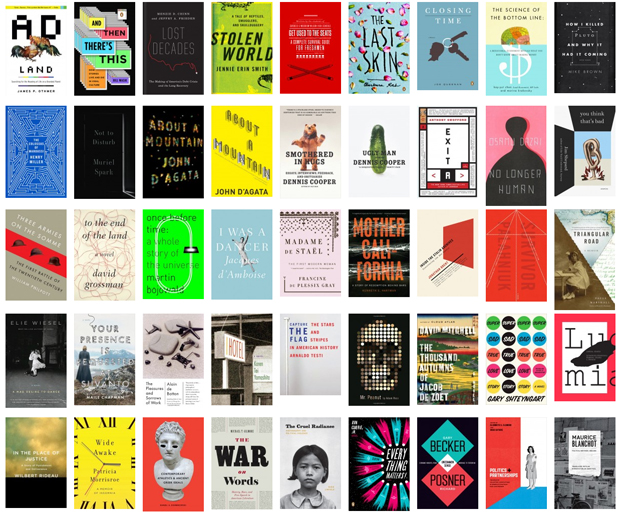I know it's a boring blog post title, but it's such an important part of your book and it's overlooked by so many indie authors, that I've got to chime in and give you a summary of hours and hours of my research that went into picking fonts for SIREN SUICIDES and involved crawling on all fours across the vast lands of the Internets and the Blogs and other peculiar places where information resides nowadays, including marvelous posts on fonts by marvelous Joel Friedlander who knows much more than me and whose site I suggest you to read from up to down, and from down to up, and from left to right and back. It's worth it. What I will give you here is a quick summary on top font choices applicable to both print and digital book versions for your reference for later, when you don't have time to look for a gazillion smart sources and just want one clear answer and be done with it. At least that's what I wanted and I couldn't find it anywhere in the roomy Internet webs, so here is what I have compiled from multiple sources.
Top choices for book covers. There is an incredible amount of articles on choosing the right font for your book cover, and I'm not an expert to give you the same sort of information, nor would I be able to stand behind it, like I know what I'm talking about, which I don't. What I do know is branding (which I did for work in the past) and what I suggest to you is to pick a brand logo that you like and go with that font, ideally not using more than two different fonts on your covers, best using only one. Sure, it will be simple, but at least it will be clean and readable. You can usually find the choice of fonts for a particular logo by copying and pasting the picture of it in WhatTheFont!
Also, browse through The Book Cover Archive to look at beautiful covers for inspiration. For the purpose of this post and for the sake of simplicity, I suggest you choose among classic fonts, both sans serif (the fonts without the little squiggly thingies) and serif (the fonts with the little squiggly thingies):
- SANS SERIF: Helvetica, Arial, Futura, Myriad, Geneva, Gill Sans, Calibri
- SERIF: Bodoni, Baskerville, Times, Cambria, Minion, Georgia, Didot
Once you have chosen the font for your book and have gleefully put the book title and your name on the cover, make sure you shrink it to the size of a typical cover you see on Amazon and make a desaturated version of your cover. Because, although dark yellow might look awesome on light blue, it will blend into grey when stripped of color and invisible in places where your book cover will be displayed in black & white, which might be an old Kindle, for example.
Top choices for chapter titles. If you stand up right now, saunter to your bookshelf and open any book you own, you will see that usually the font used for chapter titles (and any other titles, for that matter) is often different from the font used for the actual text. And that's because it gives a book interior a beautiful contrast, and it takes hours and hours to pick the right combinations, because not every font works with every font, they have to compliment each other, not clash. Therefore, all font choices presented in this blog are compatible (they are also cheap or are the fonts that come standard with Microsoft Word or are popular enough to be easy to get). And, for simplicity's sake, I choose to use only sans serif fonts for chapter titles and only serif fonts for book copy. Here is the list I came up with for chapter titles:
- SANS SERIF: Helvetica Neue, Futura, Verdana, Franklin Gothic
Top choices for the actual book text. I don't know how it's called correctly, book copy, book text, text on the page, whatever the name, it's the font for the main body of your story, and it has to be serif. It has to be. We are talking strictly fiction and novels here, and unless you are writing a non-fiction book, please, under no circumstances, never ever ever use a sans serif font for your book copy! You will look unprofessional and it will be very hard to read. Multiple studies have been conducted to confirm that, so instead of questioning it, let's just go with what those important people have uncovered. From personal experience, I can tell you that I like reading serif fonts better, they are simply more readable. In fact, in one of the studies I read, Adobe Garamond font has been called the most readable font, and since all Harry Potter books were set in it, it warranted enough for me to use it. Here is the list of choices for you:
- SERIF: Garamond, Book Antiqua, Bookman, Minion, Georgia, Palatino, Goudy, Baskerville, Century, Hoefler
If in doubt, choose a tried and true classic font. Fonts mentioned here are very simple and classic, giving you at least a place to which you can refer to (I know I will) in the future for various font combinations to choose from. However, I encourage you to do this trick I did, for picking the fonts for your book. Simply go to a bookstore and look at books. Pick one or a couple that you like, or maybe you have some books you own at home that you like, and look what fonts are used in that book. Preferably, pick a traditionally published book, something either classic or very well known, which will guarantee to you that a team of experts has been working on it.
Once you found the book that you like and that is in the same genre as your book, copy the design! Don't feel bad about it, you are not stealing anything, you are simply copying the formatting choices that have been made by big professional people. All artists do that. Until you have the knowledge or the money to hire your own team, learn from the masters. Think of it as painting a copy of Mona Lisa, to learn how to paint. I can tell you, I did exactly this. I borrowed most of my font and formatting choices from Harry Potter books. Why? Because I love them, and I tried really hard to pick some other font except Adobe Garamond, but I simply couldn't find any other font that I loved more, and that did it.



